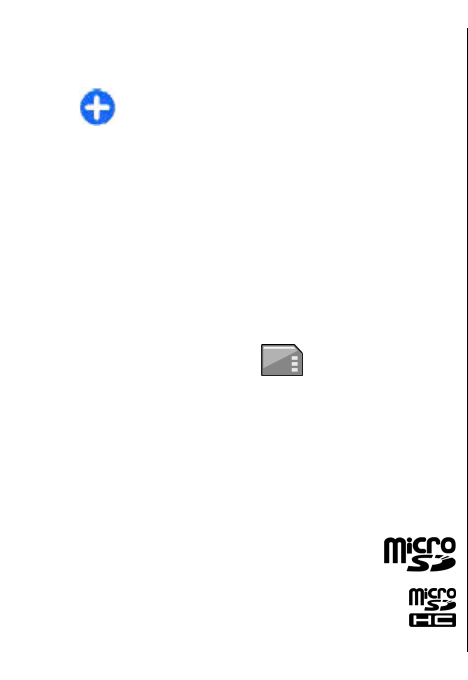
consumed by each data type, select Menu >
Options > Memory details > Phone memory or
Memory card.
Tip: To ensure that you have adequate memory,
transfer data regularly to a memory card or
computer, or use File manager to delete files you
no longer need.
After you install applications to a compatible memory
card, installation files (.sis, .sisx) remain in the device
memory. The files may use large amounts of memory
and prevent you from storing other files. To maintain
sufficient memory, use Nokia PC Suite to back up
installation files to a compatible PC, then use the file
manager to remove the installation files from the
device memory. If the .sis file is a message attachment,
delete the message from the Messaging inbox.
Memory card
Select Menu > Tools > Memory.
If you cannot use a memory card in your device, you
may have the wrong type of memory card, the card may
not be formatted for your device, or the card has a
corrupted file system. Your Nokia device supports the
FAT16 and FAT32 file system for memory cards.
MicroSDHC
This device uses microSD and microSDHC
memory cards.
To ensure interoperability, use only
compatible memory cards with this device.
Check the compatibility of a memory card with
its manufacturer or provider. Other memory
cards than microSD and microSDHC cards are not
compatible with this device. Using an incompatible
memory card may damage the memory card as well as
the device, and data stored on the incompatible card
may be corrupted.
Use a memory card
To format a memory card for your device, select
Options > Format memory card. When a memory
card is formatted, all data on the card is lost
permanently. Consult your retailer to find out if you
must format the memory card before you can use it.
To change the name of the memory card, select
Options > Memory card name.
Memory card security
Select Menu > Tools > Memory.
You can protect a memory card with a password to
prevent unauthorised access. To set a password, select
Options > Set password. The password can be up to
8 characters long and is case-sensitive. The password
is stored in your device. You do not need to enter it
again while you use the memory card on the same
device. If you use the memory card on another device,
you are asked for the password. Not all memory cards
support password protection.
To remove the memory card password, select
Options > Remove password. When you remove the
password, the data on the memory card is not
protected against unauthorised use.
110
Security and data management


















